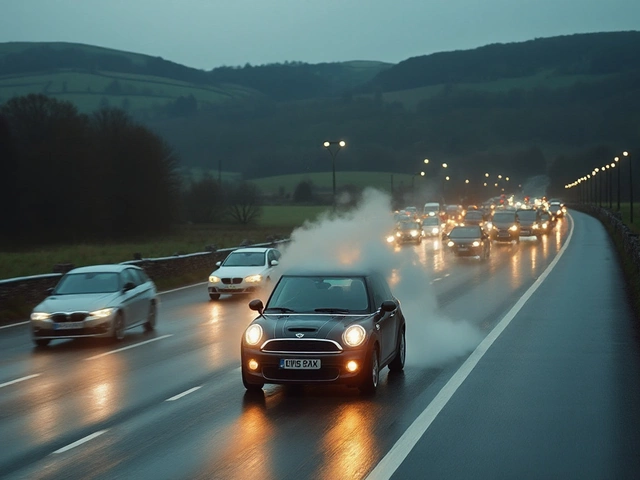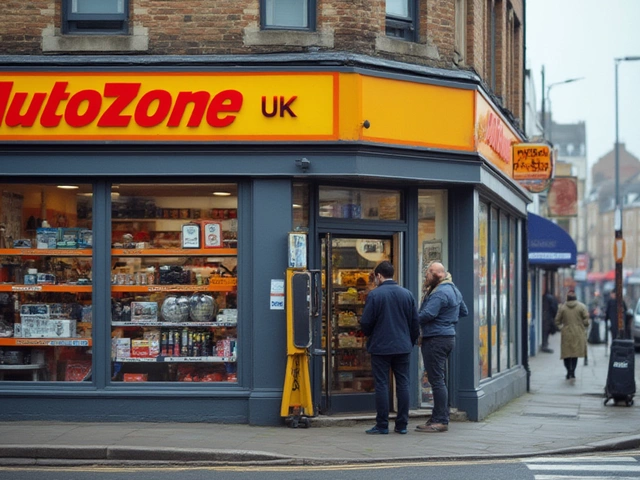UK vs US Car Regulations: What Every Driver Should Know
If you’ve ever parked a UK‑spec car in the States or vice‑versa, you’ve probably noticed the rules aren’t the same. From MOT tests to rear windscreen wiper rules, the details can affect safety, insurance and even your wallet. Below we break down the most common differences so you can avoid fines and keep your ride in top shape.
Safety inspections: MOT in the UK, state inspections in the US
In the UK, every vehicle over three years old must pass an annual MOT (Ministry of Transport) test. The MOT checks lights, brakes, tyres, emissions and structural integrity. If you fail, you have 10 days to fix the issue before the car is taken off the road. In the US, inspection requirements vary by state. Some states, like California, demand a biennial smog check, while others only require a basic safety inspection when you register a new car. There’s no nationwide equivalent to the MOT, so you need to know your state’s rules.
Tyre pressure and size standards
Tyre pressure in the UK is measured in kilopascals (kPa) or bars, while US drivers use pounds per square inch (PSI). Converting is easy – 1 bar is about 14.5 PSI. Tyre size markings also differ: UK tyres use the metric system (e.g., 205/55R16), whereas US tyres often include a speed rating and load index that can look unfamiliar. Keep a conversion chart in your glove box to avoid under‑inflating or over‑inflating your tyres, which can affect fuel economy and wear.
Another key point is tyre legal tread depth. The UK mandates a minimum of 1.6 mm across the tyre, while many US states require the same depth but enforce it with different testing methods. If you’re buying used tyres across the pond, double‑check the tread depth with a gauge – it’s cheaper than a fine.
Rear windscreen wiper rules
One of the quirkiest differences is the rear windscreen wiper. In the UK, it’s legal to remove the rear wiper as long as the car passes its MOT and you have clear rear visibility. In the US, most states consider the rear wiper part of the safety equipment, and removing it can cause a failed inspection or even an insurance claim denial. If you plan to drive a UK‑spec car in the US, reinstall a functional rear wiper to stay compliant.
Warranty and emissions standards
UK cars must meet Euro 6 emissions standards, which are stricter than many US states outside California. This means a UK‑spec diesel may not qualify for registration in some US states without a costly exhaust retrofit. Conversely, US cars often come with longer basic warranties (3‑5 years or 36,000‑60,000 miles) compared to the UK’s typical 3‑year manufacturer warranty. When importing, check both the emissions compliance and warranty transferability to avoid surprise costs.
Insurance also differs. UK policies usually include a mandatory third‑party cover called "Third Party Only" (TPO), while US drivers choose between liability, collision and comprehensive. Understanding the coverage you need for a foreign‑spec car can prevent gaps in protection.
Practical tips for crossing the pond
• Keep both kPa and PSI charts handy. • Verify your car’s MOT status before exporting – a clean certificate speeds up US registration. • Install a rear wiper if you’re moving to a state that requires it. • Check local tyre size and tread depth laws. • Confirm your warranty and emissions compliance with the destination country’s regulations.
Knowing these differences saves you time, money, and the hassle of getting your car back on the road. Whether you’re a UK driver visiting the US or an American buying a UK‑spec model, a quick checklist will keep you compliant and safe.
 10 May 2025
10 May 2025
Windscreen Wipers: What Brits Call Windshield Wipers and Why It Matters
Ever wondered what windshield wipers are called in England? In the UK, they're known as windscreen wipers, and the difference goes deeper than a simple word swap. This article breaks down naming quirks, shares interesting facts about car lingo, and offers practical tips for picking the right wipers in Britain. Get ready for insights that'll actually help you out next time you’re dealing with British car talk. If you're a traveler or just curious, you’ll see that swapping a few words can make a big difference.
Latest Posts
-

Dealing with a Damaged Radiator: What You Need to Know Before Hitting the Road
-

Make Your Car AC Cold Again: Simple Solutions to Beat the Heat
-

HVAC Air Filters: Which Type Gets Used the Most—and Why?
-

Should You Tip at AutoZone? Etiquette, Facts & Real Tips Explained
-

Resetting the Battery: Does It Affect Your Fuel Pump?

0